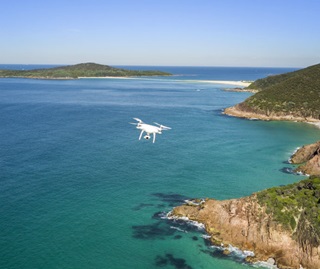 The NSW National Parks and Wildlife Service (NPWS) uses drones for park management and operational purposes, such as:
The NSW National Parks and Wildlife Service (NPWS) uses drones for park management and operational purposes, such as:
- search and rescue activities
- controlling weeds and pest animals
- monitoring beach erosion
- inspecting assets.
Other organisations also use drones for activities that support public use and enjoyment of parks or conservation, including surf life-saving and scientific research.
NPWS recognises that drones can sometimes be used in a park for recreational and commercial purposes that are unrelated to park management.
Flying drones in parks can impact visitors and disturb native animals. Drones can also dangerously interfere with fighting bushfires and other park management activities. Careful management of drone use is required to avoid these risks.
Drone users must get approval before launching, landing or operating a drone from within a park.
What is a drone and how are they regulated?
A drone is a type of aircraft. Other names for drones are remotely piloted aircraft (RPA), and unmanned aerial vehicle (UAV).
Australia's Civil Aviation Safety Authority (CASA) regulates the use of drones under the Civil Aviation Act 1988 and the Civil Aviation Safety Regulations 1998 (CASR). If you use a drone in a park, you must ensure it is airworthy, fly it safely, and follow CASA rules and regulations.
In some parks, or parts of parks, use of recreational drones may be excluded for a range of reasons, such as impacts to visitor amenity or the presence of natural or cultural values that are sensitive to disturbance. The use of drones is also prohibited in parks that are close to controlled aerodromes, such as Sydney Airport.


